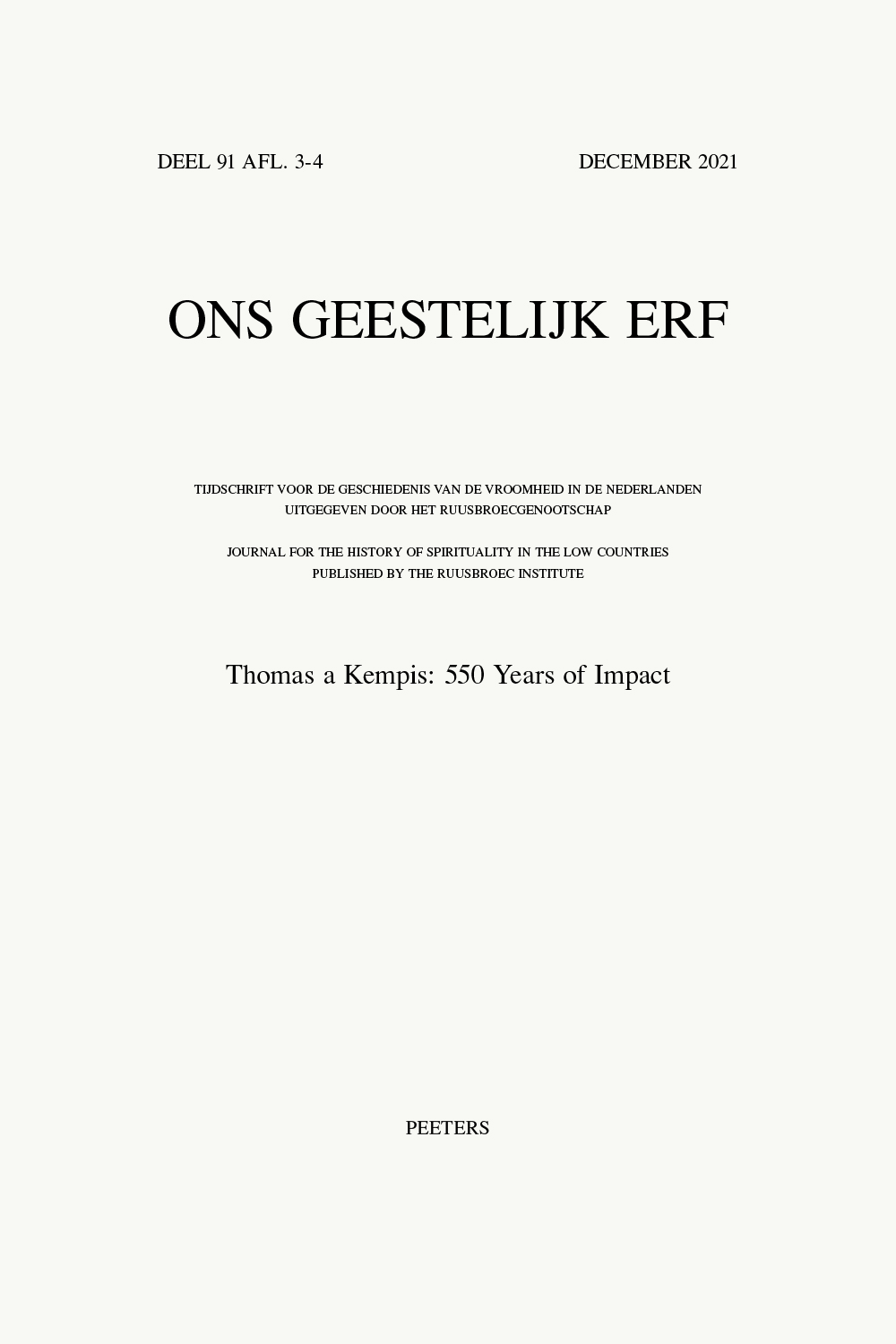 previous article in this issue previous article in this issue | next article in this issue  |

Preview first page |
Document Details : Title: De Middelnederlandse vertalingen van Bonaventura's Lignum Vitae Author(s): BOSMANS, Eefje Journal: Ons Geestelijk Erf Volume: 80 Issue: 1 Date: Maart 2009 Pages: 21-47 DOI: 10.2143/OGE.80.1.2034458 Abstract : The Lignum Vitae is a mystical treatise written in the thirteenth century by Bonaventure. It consists of 48 meditations upon the life of Jesus Christ organised by means of an allegory of a tree. Judging by its Latin tradition and its vernacular translations, the treatise was very popular during the Middle Ages. Up till now there were two known Middle Dutch translations of the Lignum Vitae. A manuscript in the library of the University of Amsterdam, however, was discovered to contain a third, independent Middle Dutch translation. Vanden houte slevens was translated in 1386, probably by Petrus Naghel, a Carthusian monk in Herne, a village some 30 km southwest of Brussels. Two manuscripts transmit the complete translation, two others only contain excerpts, but all four of them once belonged to monasteries of canons or canonesses regular. It remains unclear whether Naghel intended his translation for this specific audience. He translated in a very accurate way, staying close to his Latin source, but making small adaptations to render the translation more comprehensible. Nevertheless, his zeal for accuracy results in a rather dense translation. Devote oeffenynghe vanden boem is extant in only one manuscript from around 1520. The translation was probably made in Holland, but we have no further evidence about the author, date or milieu of this translation. From a mutilated note, we can deduce that the manuscript once belonged to a religious person. The anonymous translator remained very close to his Latin source, even imitating the Latin constructions, which results in a rather stiff and compact translation. Een boem des ghecruusten on the other hand, produces a freer and easier translation. This translation survives in one manuscript from around 1430, and was presumably also written in Holland. From the second half of the sixteenth century onwards, the manuscript belonged to the female members of a patrician family from Utrecht. These three different translations of the same Latin text give rise to the broader discussion of the existence of multiple translations in Middle Dutch religious literature. In the case of the Lignum Vitae, unfamiliarity and dissatisfaction with each other’s translations can not offer a full explanation for this phenomenon. Differences in intended audience also have to be taken into account as a possible explanation. |
|


